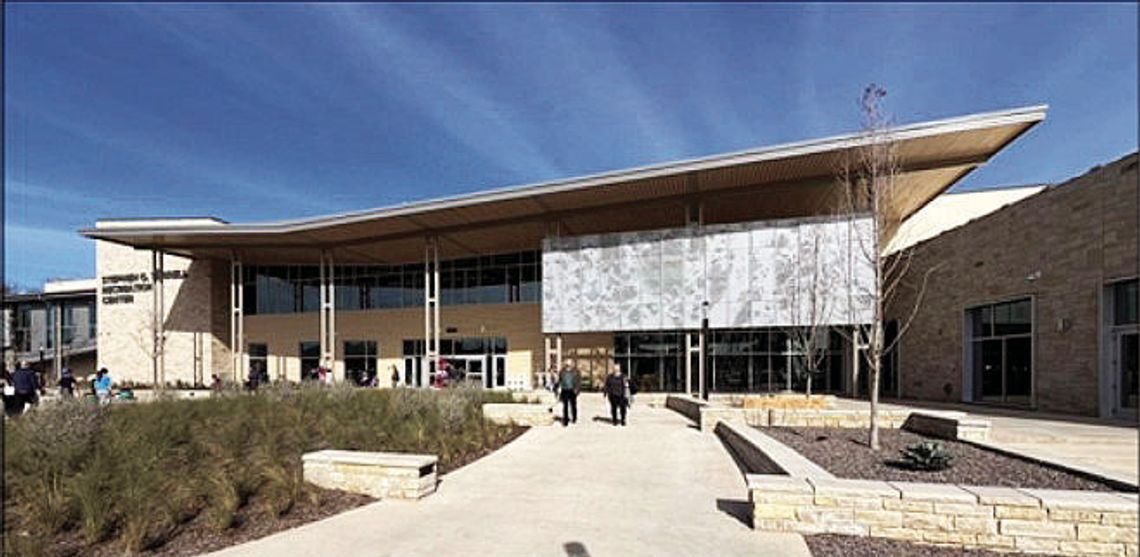Study: Residents want rec center Pool at top of list for respondents
Residents overwhelmingly support building a new wellness and recreation center in Taylor but differ on how to pay for it, according to a feasibility study for the city funded by Samsung Austin Semiconductor.
The price tag, not including land, is nearly $86 million, and voter approval would be sought if the project moves forward, officials said during City Council’s Thursday meeting.
The study completed by Barker Rinker Seacat Architecture and presented to the council included formal and informal surveys.
“This is a wish list so that future councils can decide how much money to spend, where to spend it, where to locate it, all those things,” said Mayor Dwayne Ariola. “But you don’t start in two years asking the citizens what they want. You find out now what they want and then if we get those funds, we talk about it in the future.”
The process kicked off about a year ago when the council hired Barker Rinker Seacat to conduct the study and appointed a steering committee that included Michele Glaze, Samsung’s local director of public affairs.
The $183,835 study was paid for through Samsung Quality of Life funds.
“We’ve been talking about this a long time. I looked at the 2004 master plan today and one of the No. 1 priorities was a recreation center. So, for about 20 years it’s been a priority for residents here and it still is on their wish list,” said Parks Director Tyler Bybee.
Mick Massey, Texas regional director of BRS, said the study collected data in two ways: a scientifically valid formal survey of 467 residents and an internet survey open to all neighbors.
Massey said the responses from the internet survey supported the results of the formal survey. An overwhelming 87% of respondents believe it is valuable for the city to offer a wellness and recreation center to the community.
The need for an indoor pool topped the list of desired amenities. The top five items the community identified as priorities included a pool for recreation and play, a pool for lessons and fitness, a pool for lap swimming, group exercise rooms and cardio equipment/free weights.
The surveys also highlighted a desire for group exercise classes, an indoor walking and jogging track, a place to hold special events, arts and crafts programs and more activities for older residents.
On the funding issue, respondents were divided, officials said:
• 25 percent believe all costs should be paid for by user fees.
• 10 percent felt costs should be subsidized through taxes.
• The remainder say costs should be shared in some ratio between the city and the users, with 27 percent in favor of sharing costs equally.
Massey said including all the amenities the community identified as necessary would require 111,800 square feet.
“That’s a big building. We all know Taylor is growing, and likely that building is what it ultimately needs to be,” Massey said.
He presented potential drawings of a two-story building with a pool, jogging track, gyms and other spaces and discussed Taylor Regional Park and Murphy Park as two likely sites.
An 8-acre space would be required between the building and parking area.
The project is estimated to cost $85.8 million, not including land. Massey recommended building it in two phases, starting with the mostrequested features, so the initial building would cost $55.3 million and the remainder could be built later.
The suggested financing would be through a general obligation bond, which would require voter approval. If such a bond issue were to be on the May 2026 ballot, it would result in the possible grand opening of the facility in August 2029.
After construction, the city would still need to determine how to fund operations.
“The No. 1 cost of the facility is staffing. One thing we’ve learned as an architectural firm is if we can design the building to be as efficient as possible for staffing, then you save money in operations,” Massey told council members.
Public recreational centers are almost never able to recoup the cost of operation solely on admission fees, officials said. The decision for the council will be how to balance keeping admission fees low and accessible, versus recouping a greater portion of the operating expenses.
Massey provided estimates showing that charging Taylor residents a day rate of $6 per adult and $5 per child ($27 for a family of five) would result in an average annual cost to the city of about $664,000, while charging $7 each ($45 for a family of five) would lower the city’s operation cost to about $465,000 per year.
Additional revenue from sponsors, partnerships and increased fees for out-of-town users could help offset those costs.
Council members agreed the wellness and recreational center was something that needed voters’ authorization.
Initiatives to include on the May 2026 ballot have to be finalized in February of that year.
“There’s not a place for the youth, there’s not a place for the seniors to go,” Bybee said. “There’s thirst for it, a need for it. How do we get there, that’s the hard part.”









